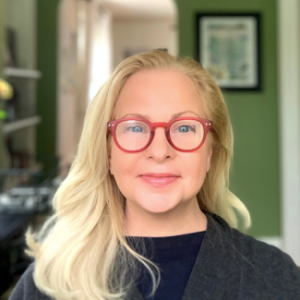This month, the CDC released new data from anonymous surveys completed by 7,705 high school students from 128 schools around the U.S. during the first six months of 2021. The report is the first of its kind since the onset of the pandemic to share self-reported data from adolescents after months in isolation. Here’s what they had to say:
Forty-four percent of students reported that they persistently felt sad and hopeless during the past year.
Twenty percent of students said that they had seriously considered attempting suicide, and nine percent attempted suicide in that time period.
Fifty-five percent of students reported that they experienced emotional abuse by a parent or other adult in their home. Emotional abuse was defined as swearing, insulting, or belittling the adolescent.
Eleven percent of students reported experiencing physical abuse by a parent or other adult in their home. Physical abuse was defined as hitting, beating, kicking, or physically hurting the adolescent.
About 75 percent of LGBT youth said they suffered emotional abuse in their home, and 20 percent reported physical abuse.
For years before the pandemic, America’s youth were experiencing a sharp decline in their mental health. It’s a decline specific to their age group, with no corresponding increase in adult rates. Back then, researchers were calling these alarming statistics a “wake-up call.”
Then came the pandemic, and those calls went unanswered. In 2021, emergency room visits for suicide attempts rose 51 percent for adolescent girls compared with the same period in 2019, according to the recent U.S. Surgeon General’s Advisory, which addressed the nation’s youth mental health crisis. A CDC report released in February found that emergency room visits by teenage girls relating to eating disorders had doubled during the pandemic.
Of its most recent report, the CDC Acting Principal Deputy Director said, “These data echo a cry for help.”
We’ve heard this echo here in West Virginia for many months— mostly from students at our state universities. They created the Green Bandana Initiative, a project designed to bring awareness, trainings, and help students address mental health issues on university campuses. There have been op-eds in state newspapers and calls for the Governor to sit down with students and discuss the use of pandemic funding to help address the escalating problem.
And in late 2021, Think Kids released a series of blog posts on the increased demand for children’s mental health services. Child therapists said kids were coming to emergency rooms in crisis with nowhere to send them for treatment.
But few in leadership positions seem to be listening— not from the Governor’s office or Legislature. As Logan Riffey eloquently put it in his recent op-ed: “In a given legislative session, there are 86,400 minutes. It breaks my heart that collegiate mental health was unworthy of even one minute of serious consideration on the floor of either chamber.”
It’s interesting that from this recent survey of high school students, the CDC found that a sense of being supported and belonging at school had a positive effect on students, despite the continued challenges of the pandemic. Students who felt close to persons at school had a lower prevalence of poor mental health during the pandemic— 28.4 percent compared to 45.2 percent.
Think about that. To be seen, heard, and valued by adults in the school setting lowered the prevalence of poor mental health for high school students during the pandemic. And yet, this acknowledgment is what is being withheld from the college students asking for help from our policymakers. It’s a simple first step they’re refusing to take.
The lack of access to youth mental health care is not unique to West Virginia, or even the United States. Neither is the increasing rates of poor youth mental health. What’s different is that many other states see it and are addressing it, but for whatever reason, we’re letting our youth suffer without a coordinated response.
An easy first step is to remember that connections matter. Communities can collaborate to provide youth opportunities for academic, social, mental, and physical health services. Get adolescents and young adults engaged and create strong social supports for them.
Parents and advocates, we can make youth mental health an election issue. Ask candidates what they’ll do to build more capacity in the mental health care system to keep kids out of emergency rooms, cut wait times for mental health services, and develop a qualified, sustainable workforce of children’s mental health professionals.
We have an obligation to the younger generations to be the adults they need us to be. For many adolescents, the pandemic is far from over. It’s time to hear and acknowledge what they’ve been trying to tell us.

Kelli Caseman is executive director of Think Kids, a nonprofit that advocates for the health and well-being of West Virginia’s children.
News & Journal Note: The editor of the Shinnston News & Harrison County Journal sometimes freelance writes for Think Kids.


